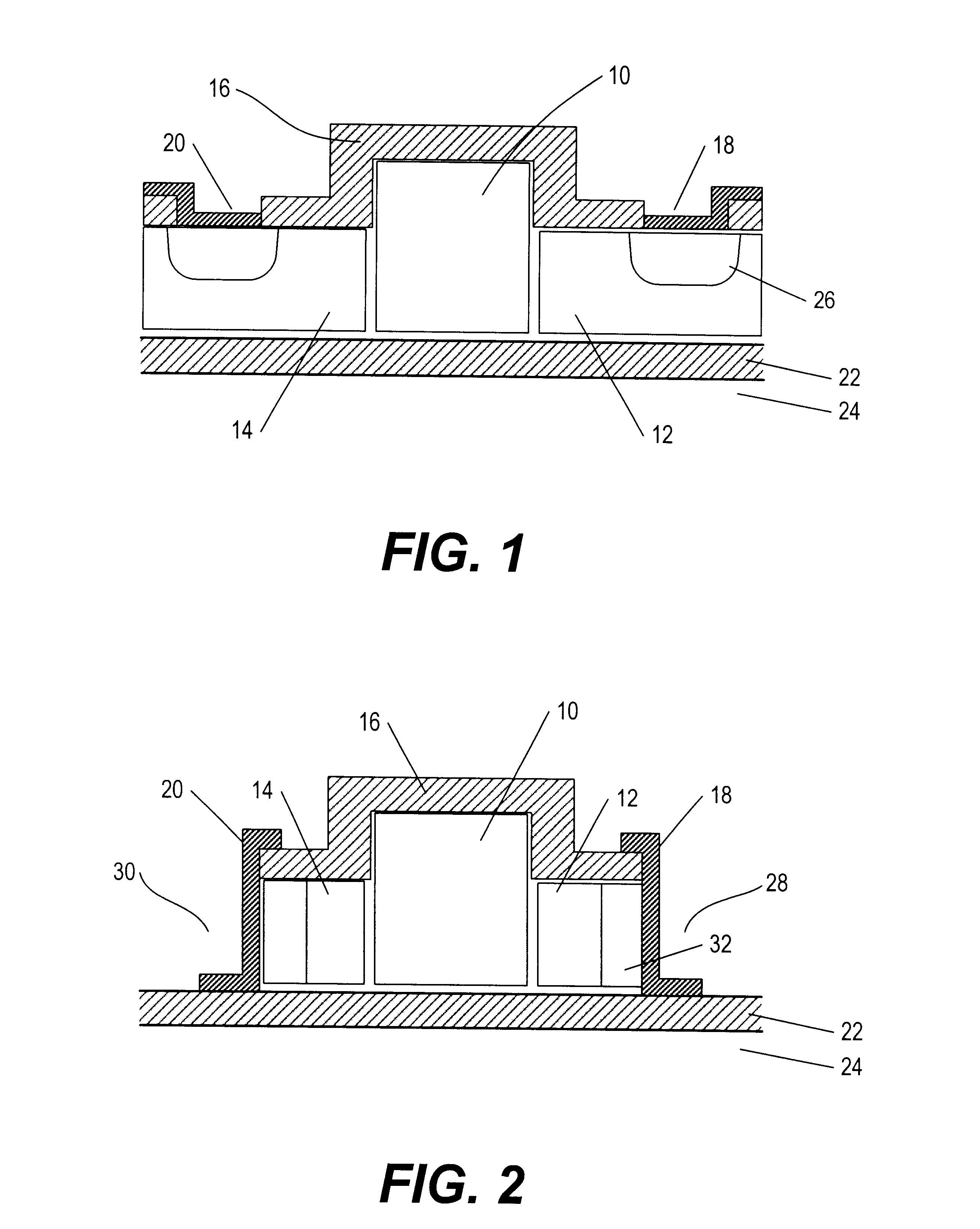Electro optic modulator
a technology of optical modulator and optical fiber, applied in the direction of optics, optical light guides, instruments, etc., can solve the problems of difficult control of dopant profiles, loss of signal and local heating,
- Summary
- Abstract
- Description
- Claims
- Application Information
AI Technical Summary
Benefits of technology
Problems solved by technology
Method used
Image
Examples
Embodiment Construction
It should be noted that for convenience of description, terms such as "lateral", "vertical", "side", "top" etc. used in the specification refer to directions relative to a device in the orientation shown in the accompanying drawings. The terms should not, however, be interpreted as restricting the scope of the claimed invention which may in practice be used in any orientation.
FIG. 1 has already been described in detail, and therefore no further description will be given here.
FIG. 2 shows a first embodiment of the present invention. As in FIG. 1, the device is a silicon-on-insulator device in which an oxide layer 22 lies between the active elements and an underlying silicon support 24. The ridge of the waveguide 10 is again flanked on either side by slab regions 12, 14, but these are now flanked by etched regions 28, 30 formed by an anistropic, directional dry etch. A protective oxide layer 16 covers the waveguide ridge 10 and the top surfaces of the slab regions 12, 14.
The slab regi...
PUM
 Login to View More
Login to View More Abstract
Description
Claims
Application Information
 Login to View More
Login to View More - R&D
- Intellectual Property
- Life Sciences
- Materials
- Tech Scout
- Unparalleled Data Quality
- Higher Quality Content
- 60% Fewer Hallucinations
Browse by: Latest US Patents, China's latest patents, Technical Efficacy Thesaurus, Application Domain, Technology Topic, Popular Technical Reports.
© 2025 PatSnap. All rights reserved.Legal|Privacy policy|Modern Slavery Act Transparency Statement|Sitemap|About US| Contact US: help@patsnap.com



